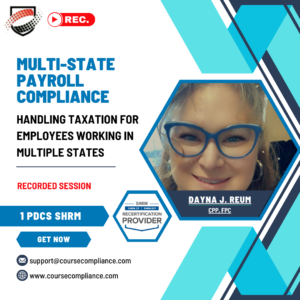Unified Agenda of Federal Regulatory and Deregulatory Actions is a semiannual compilation of information about regulations under development by federal agencies, published in the spring and fall.
The government’s fall regulatory agenda just dropped. Highlights include overtime regulations slated for April 2024.
The DOL plans to finalize updates to the executive, administrative and professional exemption for overtime pay under the Fair Labor Standards Act.
Increase the salary threshold for overtime exemptions from $684 per week ($35,568 annually for a full-year worker) to $1,059 per week ($55,068 annually for a full-year worker). The increase reflects the 35th percentile of weekly earnings of full-time salaried workers in the lowest-wage census region (currently the South).
Increase the salary threshold for highly compensated employees from $107,432 annually to $143,988 annually. The increase reflects the earnings of the 85th percentile of full-time salaried workers nationally.
Implement automatic increases every three years to all salary thresholds.
The sizable hike means that, if the rule goes into effect as proposed, employers may have many employees whose salary falls between the current threshold and the proposed new threshold, Coburn noted. Employers “will have to decide whether to increase the salaries for those employees to get them up over the new salary threshold, or to convert the employees to nonexempt and start paying them overtime.
In addition to being a costly proposed rule for businesses, there might be nonmonetary impacts on employees whose salary is between the current threshold and the proposed new one.
Based on the Regulatory Agenda highlights, DOL plans to move swiftly through regulations now that the Comments Period (11/7/23) has closed. The DOL is required to take each comment into account and then determine whether to adjust the proposed rule before it becomes final. The agency will then issue a final rule taking the comments into account, and it will then take effect within a few weeks of the final proposal being issued. Employers must start preparing for what could be big changes to your compensation plans.
Now is the time for Employers to make preparations for this impactful process.
Why one should attend the training:
Employers should learn that the previous overtime increase created severe complications regarding communications to impacted employees, a decrease in staff morale for those who believed that it was a demotion, loss of benefits when they decided to reduce hours, and costs, challenges with job descriptions and expected impact in Employer’s budget. It led to an increase in turnover and a decrease in retention.
Employers can take the time to review and prepare for setting guidelines on how they communicate the impact to employees, make effective decisions on how to cut costs without reducing employee hours or benefits, and develop a training program for managers and newly non-exempt employees.
Areas that will be covered during the Session:
- Learn why Employers should learn to review the Federal Regulatory Agendas for what will priorities are trending to prepare for any items.
- Learn what the highlights mean to the launching date of April 2024
- Learn what the DOL proposal includes and who it impact more.
- Learn how long Employers have to make changes.
- Learn how Employers can proactively impact the proposed decision.
- Learn what communication details can effectively and positively impact newly non-exempt employees.
- Learn how job responsibilities determine classification, not job titles.
- Learn how to comply without the risk of a decrease in staff morale, increase in turnover, decrease in retention, and removal of benefits.
- Learn how the automatic updates in salary threshold according to the consumer price index (CPI) can impact ongoing budget losses.
- Learn how employers should confirm the duties tests before making negative decisions.
- Learn how the Executive Exemption, Administrative Exemption, and Professional Exemptions can confuse the Employer’s judgment on exempt and non-exempt employees.
- Learn how Employers can use the Fair Labor Standards Act to prepare for identifying the proper compliance guidelines.
- Learn what resources Employers can use to mitigate the negative response by employees.
- Learn what Employers need to do to determine how state overtime regulations impact federal regulations and which supersedes them.
Target audience
- All Employers
- Business Owners
- Company Leadership
- Compliance professionals
- Payroll Administrators
- HR Professionals
- Managers/Supervisors
- Employers in all industries
- Small Business Owners






Reviews
There are no reviews yet.